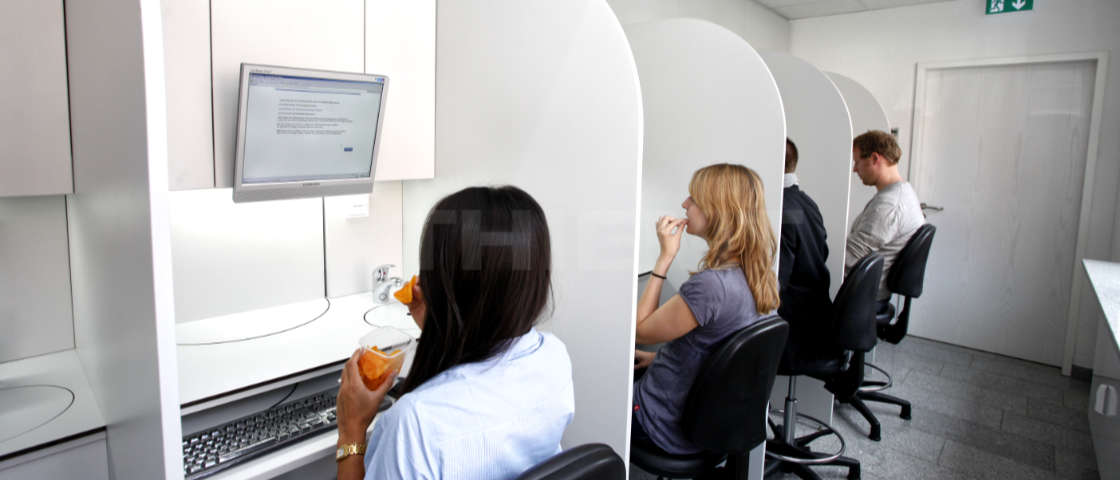Sensory tests
Product characteristics such as the appearance, smell, taste and skin feel are often crucial to the final buying decision. It is therefore essential to know the customer's wishes and implement the product designs accordingly. Here sensory tests play a supporting role.
Definition
In sensory tests substance properties and quality characteristics are tested and measured that are perceived through the senses. This includes the appearance, smell/
Essentially, sensorially tested substances are raw materials, ingredients, intermediates, semi- or end-products.
Target groups
Especially for producers in the following industries, sensory product characteristics are very important:
- Foodstuff and luxury food
- Beverages
- Scents, odorants and flavors – fragrance producers, aroma industry
- Detergents and cleaning agents
- Body, skin and hair care products, cosmetics
- Toothpaste
- Animal food
- Pharmaceuticals
- Packaging materials for groceries (DIN 10955)
FIELDS OF APPLICATION
- Quality control of raw materials, auxiliary materials, ingredients, packing material, intermediates and end products
- Objective assurance: Does the product possess all the characteristics that are important to the consumer?
- Product comparison with the market leader
- Investigation of the possible influence of new raw material charges on product perception
- Investigation of the influence of new process technologies in the production
- Determination and examination of expiry periods
- Observation of labile or varying product characteristics
- Investigation of the storage stability (ripening and ageing processes)
- Control of packing materials and its influences on the product perception, quality and stability
- Investigation of the influence of transport conditions
- Processing of sensory complaints
- Product development/
optimization - Investigation of changes to the product quality by qualitative and quantitative modification of raw materials and additives
- Long-term profile of the product perception
- Development and innovation of product standards
- Development of prototypes
- Research
- Identification of the ingredients that affect the sensory quality
- Investigation of the relationship between the sensory characteristics and the chemical, physical and textural properties of the test item
- Recognition and development of sensory trends
- Marketing and market research
- Which formulation achieves the highest acceptance in the target group?
- Which product characteristics lead to a recipe that fits the targeted product positioning?
- How well are the expectations met by the recipe that are created by the product concept?
- Which product characteristics should be improved from the view of the target group?
Benefits for the producers
- Avoidance of flops and complaints
- Long-term commercial success by product optimation/
advancement - Sales increase
- Improvement of the market position
- Reduction of production costs without quality loss
- Support for the development of new products or trends
Typical test procedure in a sensory lab
- Arrival of the test participants in the waiting room
- The test participants have a seat in the test room
- Coding of the neutral sample containers
- Even filling of the sample containers
- Passing the samples to the participants
- Staff acknowledges the handover by setting a status indicator
- Acceptance of the sample (under certain lighting conditions to mask colors, if needed)
- Processing of the sensory test and completion of the questionnaire
- Completion of the testing phase and return of the sample
- Evaluation of results and development of measures for the practice
